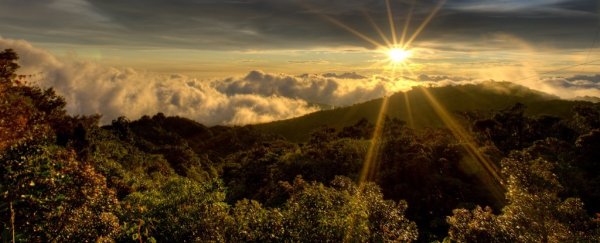Costa Rica has done it again. In January, the Central American country announced it had powered its electricity for a stunning 250 days in 2016 without burning fossil fuels. Now its 2017 effort has already eclipsed that feat – and it's still only November.
So far this year, Costa Rica has clocked up 300 days where 100 percent of its electricity generation came from renewable energy sources – no small accomplishment for a nation comprised of some 5 million people.
According to figures provided by Costa Rica's National Centre for Energy Control, 99.62 percent of the country's electricity production is now generated from five renewable sources.
Leading the charge is hydropower, which provides 78.26 percent of Costa Rican electricity, followed by wind (10.29 percent), geothermal energy (10.23 percent), biomass and solar (0.84 percent), and hydrocarbons (0.38 percent).
Together, these sources have powered Costa Rica for 300 days in 2017 as of November 18, besting the nation's personal record set in 2015, in which the country relied on green energy for 100 percent of its electricity for 299 days.
When renewable energy sources are unavailable, the Costa Rican grid defaults to a thermal backup to generate power, but this year it hasn't had to resort to that measure since May 1, meaning its enjoyed a consecutive streak of more than 200 days relying solely on renewables for electricity.
The consecutive run marks the latest in a series of impressive renewable streaks from Costa Rica, which notched up 76-day and 75-day stretches in 2016 and 2015 respectively.
It's important to note that the figures only pertain to electricity generation. Costa Rica still uses fossil fuels for petrol-based vehicles, and for things like gas heating of buildings.
But compared to most other countries in the world, it's still a shining example of how renewable sources can be leveraged to shoulder the burden of all (or almost all) the electricity demands of an entire nation.
"It really is time to debunk the myth that a country has to choose between development on the one hand and environmental protection, renewables, quality of life, on the other," the founder of renewable energy initiative group Costa Rica Limpia, Monica Araya, said in a 2016 TED talk.
Of course, as far as countries go, Costa Rica is relatively tiny, and its environmental benefits – an abundance of rainfall – are primarily what keep its hydropower sector booming along.
But as for the argument this somehow means Costa Rica possesses an essential or unique advantage in terms of renewable opportunities that other nations don't have, Araya says it's simply not true.
"It is not just good luck. It is also an ability to think in the long term," she told Yale Environment 360 earlier in the year.
"The story could have been different. It could have been the story of any developing country that goes for the short-term option. I think the underpinning rationale that shaped some of the decisions that now have paid off – for example, non-fossil fuel electricity generation, the creation of national parks – was the ability to think in the long term."
That long-term view is exactly what the rest of the world needs to think about right now, with CO2 emissions and global temperatures still steadily rising towards an uncertain future.
With that in mind, it's important to take note of what Costa Rica is doing here – their success can be ours too. We just have to want it badly enough.
